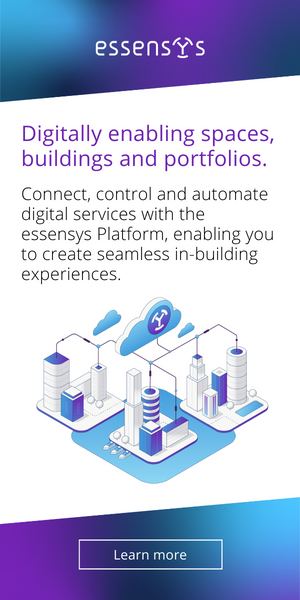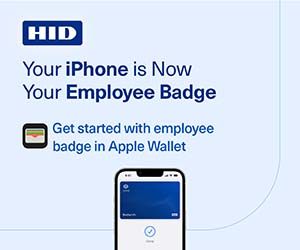Chicken Little, Big Brother and Workplace Tech

With the world taking another crack at a “return to work” this autumn, a spate of stories has appeared warning of a byproduct of the global pandemic: a reset of societal norms when it comes to privacy expectations in the workplace. In recent weeks, everyone from The Wall Street Journal to The New York Times to The New York Review of Books has weighed in. There’s even been some action in the U.S. Senate, where Sen. Bob Casey, D-Pa., is asking the Labor Department to take a fresh look at what has become known as “surveillance tech.”
The best of these pieces carefully parses the advantages and disadvantages of technological innovations born of the pandemic emergency. But the general tone has been disappointingly alarmist and without context: The transformed worker-employer relationship is also a byproduct of the pandemic, and one I would argue will make most workplaces more rather than less humane.
There are indeed instances of companies that have used the pandemic as an excuse to push into clearly unethical (if not illegal) frontiers of surveillance. The Electronic Frontier Foundation, an NGO that monitors data privacy matters, breaks these so-called “bossware” products into two broad categories: those that employees know about and can possibly control, and those that secretly snoop on employees, in the office or remotely, with no consent. Some of this stuff is dastardly; others dangerous and evil. The New Yorker’s Ronan Farrow documented the story of NSO, an Israeli software firm that produced a deep-link surveillance software called Pegasus sold to governments to track dissidents.
It’s one thing to insist that people turn on their cameras for Teams or Zoom meetings, or insist they clock in when they arrive at work. It’s quite another to deploy software that secretly photographs or videotapes a remote employee, or which reads keyboard strokes and assumes that a lack of such activity equals goofing off.
But many of the technological innovations borne out of the pandemic are in no way akin to “Big Brother.” Across the world, the need to monitor the health of indoor spaces and the wellness of those within them has spawned a new push to outfit buildings with Internet of Things sensors measuring everything from CO2 and particulate matter in the air to the density and usage of conference rooms, labs and washrooms. Marketing such products should emphasize that these technologies do not collect the personally identifiable information so dear to the ad-fueled business model of Facebook and Amazon.
This new workplace tech mostly responds to well-established risks that have been underscored by the pandemic. Lead with the importance of privacy and transparency front and center in any such marketing, and be sure to stress the firm’s record of compliance with the EU’s General Data Protection Regulation and its American variants. Admit when identity is necessary for the product to function. For example, desk booking software is useless if you can’t prove you booked the desk. Don’t shy away from this conversation. Meet it head-on and, ideally, with a forthright admission that any trade-offs will be done transparently and with full consent.
The key for both marketing and human resources professionals is to embrace transparency when deploying these products and preparing the company to patiently explain the rationale for things like desk booking systems or push-button feedback stations without dismissing employee concerns as just so much griping.
The situation becomes more complex when risk mitigation and safety is the goal. Microshare, my company, developed a wearable contact tracing technology during the early months of the pandemic that was based on a previous product, Asset Zoning, which had been used in hospitals to track wheelchairs and other mobile equipment with a tendency to get lost in distant corners. While many of us decamped to “remote working,” many of our clients, including workers at global GlaxoSmithKline pharmaceutical plants, could not be productive from their bedrooms. This meant, by definition, that density was going to persist and potentially pose a risk of COVID-19 infection and outbreaks in the company’s two dozen global production sites.
For example, one of my company’s clients deployed a wearable contact tracing system to protect factory staff around the world from major Covid-19 outbreaks as the pandemic took hold. Our client deployed Bluetooth-enabled wristbands active only on the worksite and which had no ability to store PII. The data remained anonymous until someone reported a symptom, at which point our client’s HR department did a reverse database query and informed anyone who recently had been within six feet of the person in question to test for Covid-19. The company addressed employees’ privacy concerns and was transparent about its reasons for deploying the technology.
The ability to be transparent about how technologies like these work is precisely why tarring all the new workplace technology with Orwell’s brush is counter productive. “snooping” or “invasions of privacy” by definition involves subterfuge and secrecy. Context is important. The right to privacy in a workplace is a moving target, and it’s worth noting that, ever since email became a standard business tool, U.S. courts have held that employers can read messages composed on company equipment or transiting company domains. This strikes me as far more invasive than a sensor that warns that CO2 levels are spiking, or allows employees to know which conference rooms are available for booking.
Sunshine, they say, is the best disinfectant. Shined in the right places, it can also allay fears in the post-pandemic workplace.
This Week’s Sponsor
Microshare leverages the power of Internet of Things (IoT) data to solve real word problems. Our Sensing-as-a-service model takes the complexity out of IoT, enabling the creation of Digital Twins of our global clients’ physical assets. This unlocks previously hidden data insights that secure people and places, produce cost savings and sustainability metrics. Visit Microshare.io to learn more.
Read Next
 5/15/2025
5/15/2025
Tech, Talent and Transformation: 2025 Digie Finalists Announced For 27 years, Realcomm has presented the Digie Awards to acknowledge companies, real estate projects, technologies, and individuals that have advanced the commercial real estate industry through the strategic use of technology, automation, and innovation.
 5/15/2025
5/15/2025
Empowering Space Management with Data-Driven Visualization For effective CRE space management, it’s critical to centralize lease data, maximize rental square footage (RSF), improve energy efficiency and reconfigure spaces to meet changing needs.
 5/8/2025
5/8/2025
The AI-Powered Workplace Evolution: Redefining the Business Landscape In today's rapidly evolving business environment, the fusion of Artificial Intelligence (AI) and Workplace Management is revolutionizing the way organizations approach workspace optimization and operational efficiency.
 3/27/2025
3/27/2025
The Convergence of Edge Computing, Cloud, and AI in Building Automation and Smart Buildings In the built environment, we have seen the convergence of Operational Technology (OT) and Information Technology (IT), later expanding to include Workplace Technologies (WP).




%20(1)%20(1)%20(1).png)








